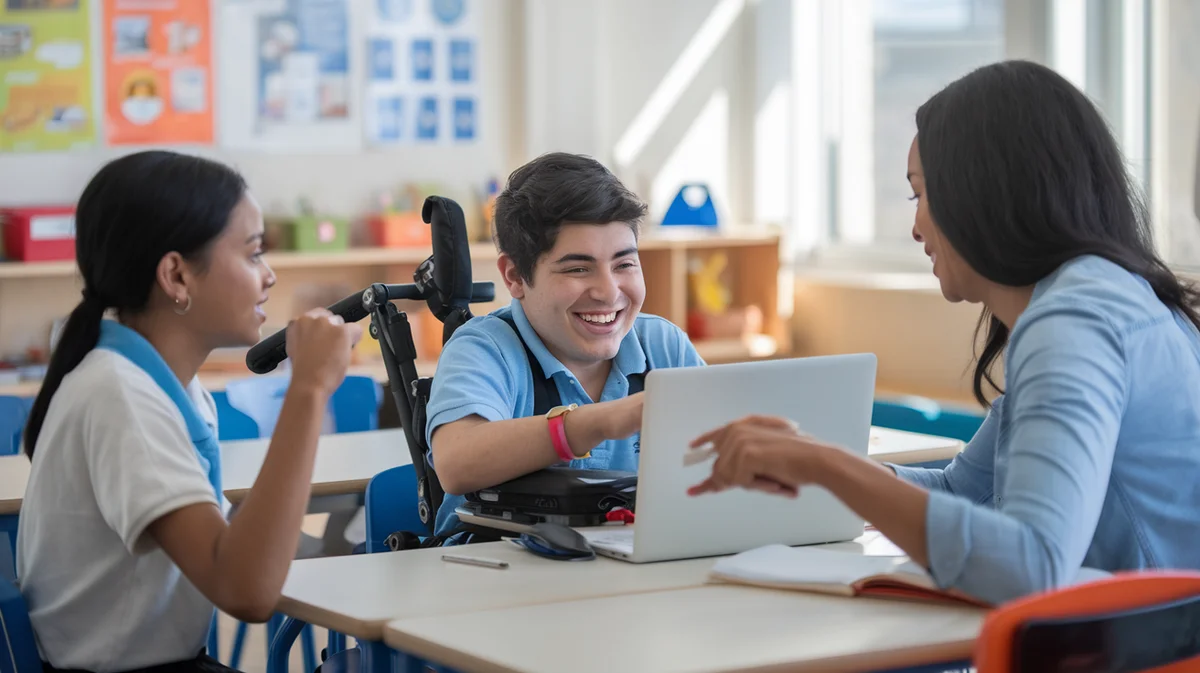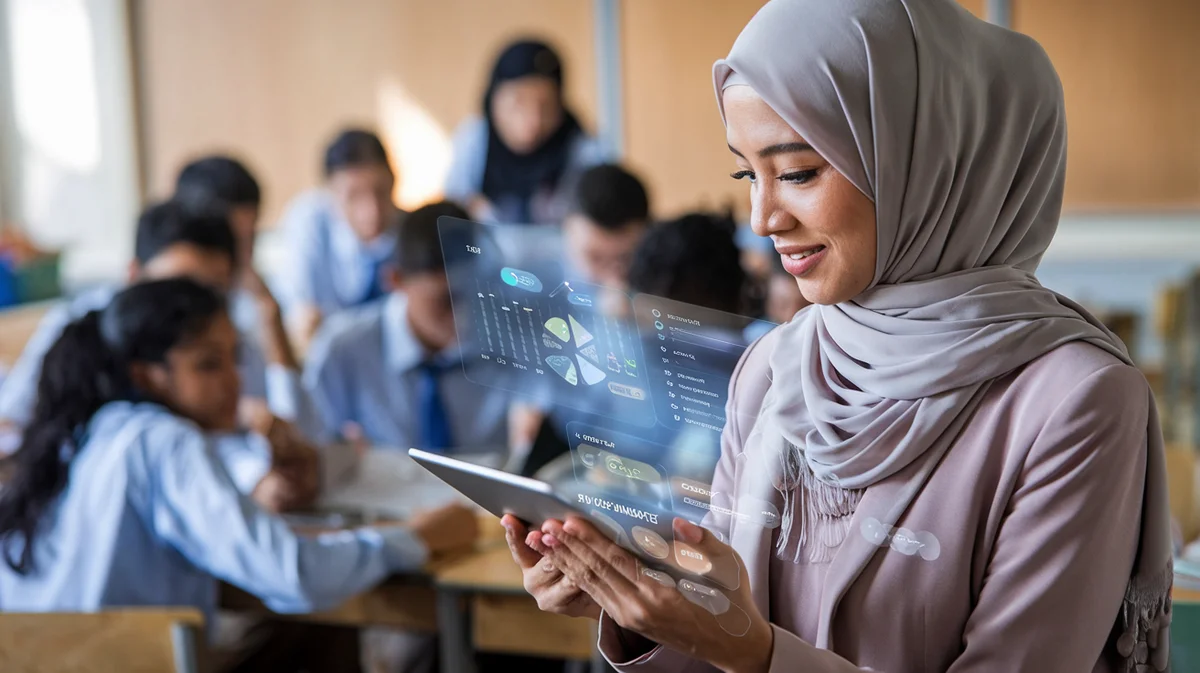Student Voices in Inclusive Education: Shaping the Future of Learning


wp:paragraph
Inclusive education is transforming learning environments worldwide, but the most profound changes occur when we listen to those at the heart of the system: the students themselves. At UNOWA, we believe that empowering student voices is essential to creating educational systems that are not only inclusive but also adaptable, innovative, and future-ready. Drawing on global research, regional insights, and our own experience designing and delivering complete educational solutions, we explore how student experience shapes inclusive education and why amplifying student participation is key to lasting impact.
/wp:paragraph
wp:heading {"level":2}
The Power of Student Experience in Inclusive Education
/wp:heading
wp:paragraph
Inclusive education is more than just integrating students with diverse needs into mainstream classrooms. It is about ensuring every learner — regardless of ability, background, or circumstance — has equitable access to quality education and the opportunity to thrive. Central to this mission is the recognition that student experience is a critical driver of effective, responsive, and sustainable inclusion.
/wp:paragraph
wp:paragraph
Recent data from the European Agency Statistics on Inclusive Education (EASIE) and UNICEF highlight significant progress in regions such as Central and Eastern Europe, the Caucasus, and Central Asia, where out-of-school rates have halved over the past two decades. Yet, millions of children, especially those from marginalized communities, remain unaccounted for in national data, underscoring the need for systems that truly reflect and respond to the realities of all students.
/wp:paragraph
wp:heading {"level":2}
International Frameworks and Regional Commitments
/wp:heading
wp:paragraph
Our work is guided by international frameworks such as the UN Convention on the Rights of Persons with Disabilities (CRPD) and UNESCO’s Education 2030 Framework for Action. These frameworks, alongside the EU’s strategic objectives for inclusive education, set clear expectations for equity, lifelong learning, and the active participation of students in shaping their educational journeys.
/wp:paragraph
wp:paragraph
Countries across the EU, MENA, and CIS regions are increasingly adopting a rights-based approach, moving away from outdated models that segregate students based on medical or psychological assessments. Instead, there is a growing emphasis on broadening support systems in schools and fostering environments where every student’s voice is valued.
/wp:paragraph
wp:heading {"level":2}
Why Student Participation Matters
/wp:heading
wp:heading {"level":3}
Student Voices as Catalysts for Change
/wp:heading
wp:paragraph
Research consistently shows that when students are actively involved in decision-making, educational environments become more responsive and effective. Engaging students in shaping policies, curricula, and daily school life leads to:
/wp:paragraph
wp:list
- Greater buy-in and ownership of learning
- Improved well-being and self-esteem
- Higher academic achievement
- More inclusive and welcoming school cultures
/wp:list
wp:paragraph
Mechanisms such as student councils, peer mentoring, and participatory curriculum design are increasingly recognized as best practices for amplifying student voices. For example, in 23 of 30 education systems reviewed in the CEE/CIS region, schools now offer counseling and mentoring, while 21 provide specialist and therapist support — a holistic approach that centers student experience.
/wp:paragraph
wp:heading {"level":3}
The Impact of Inclusive Education Student Experience
/wp:heading
wp:paragraph
The inclusive education student experience is not just about access; it’s about meaningful participation. When students with and without disabilities collaborate, share perspectives, and contribute to school life, everyone benefits. Inclusive classrooms foster empathy, creativity, and critical thinking — skills essential for success in a rapidly changing world.
/wp:paragraph
wp:heading {"level":2}
Challenges and Opportunities
/wp:heading
wp:paragraph
Despite progress, significant challenges remain:
/wp:paragraph
wp:list
- One in three students with special needs in Central and Eastern Europe is still placed in special schools.
- In countries like Georgia, Kyrgyzstan, and Mongolia, youth with disabilities are disproportionately represented among out-of-school populations.
- Admission to schools in half of the reviewed education systems still depends on medical-psychological assessments, which can exclude or stigmatize students.
- Marginalized groups, such as Roma children, have significantly lower participation rates in early childhood education (36% vs. 86% national average).
/wp:list
wp:paragraph
However, these challenges also present opportunities for innovation. Technology and digital solutions are opening new pathways for inclusion, from accessible learning platforms to assistive technologies and online peer support networks. The COVID-19 pandemic accelerated the adoption of digital tools, but also highlighted the need to bridge the digital divide to ensure no student is left behind.
/wp:paragraph
wp:heading {"level":2}
Proven Strategies for Amplifying Student Voices
/wp:heading
wp:paragraph
At UNOWA, our approach to inclusive education is grounded in evidence and best practice. Here’s how ministries, educators, and institutions can harness the power of student voices:
/wp:paragraph
wp:heading {"level":3}
1. Systematic Student Feedback
/wp:heading
wp:paragraph
Collecting and acting on student feedback is essential for continuous improvement. Ministries and institutions should implement regular surveys, focus groups, and participatory forums to ensure that policies and practices reflect the lived experiences of all learners.
/wp:paragraph
wp:heading {"level":3}
2. Teacher Training and Professional Development
/wp:heading
wp:paragraph
Investing in teacher training on inclusive pedagogy and student engagement is critical. Educators need the skills and confidence to facilitate student participation, adapt instruction, and create supportive classroom environments.
/wp:paragraph
wp:heading {"level":3}
3. Flexible Support Systems
/wp:heading
wp:paragraph
Schools should offer a range of support services — including counseling, mentoring, and specialist interventions — to address diverse needs. Flexible pathways and individualized learning plans help ensure that every student can succeed.
/wp:paragraph
wp:heading {"level":3}
4. Leveraging Technology for Inclusion
/wp:heading
wp:paragraph
Digital innovation can make learning more accessible and engaging. From universal design for learning (UDL) principles to adaptive learning platforms, technology enables personalized support and fosters collaboration among students.
/wp:paragraph
wp:heading {"level":3}
5. Inclusive Policies and Non-Discriminatory Practices
/wp:heading
wp:paragraph
Admission and assessment processes must be inclusive and free from bias. This means moving away from restrictive criteria and ensuring that all students have equal opportunities to participate and excel.
/wp:paragraph
wp:heading {"level":2}
Regional Insights and Success Stories
/wp:heading
wp:paragraph
Across the EU, MENA, and CIS regions, we see inspiring examples of inclusive education in action:
/wp:paragraph
wp:list
- In the EU, higher education institutions are developing support services, flexible learning pathways, and targeted outreach to underrepresented groups, informed by student feedback and participation.
- In the CEE/CIS region, the percentage of children with disabilities in special schools dropped from 78% in 2005/06 to 53% in 2015/16, reflecting a shift toward more inclusive settings.
- Ministries are increasingly prioritizing the collection of disaggregated data on marginalized groups, enabling targeted interventions and more effective resource allocation.
/wp:list
wp:paragraph
For more on international frameworks and best practices, see UNESCO’s Inclusive Education resources, European Agency for Special Needs and Inclusive Education, and UNICEF’s work on inclusive education.
/wp:paragraph
wp:heading {"level":2}
Actionable Insights for Stakeholders
/wp:heading
wp:paragraph
For Ministries: Prioritize data collection and analysis to identify and address gaps in participation, especially among marginalized groups. Collaborate with students, families, and communities to co-create inclusive policies.
/wp:paragraph
wp:paragraph
For Educators: Foster a culture of participation by involving students in classroom decisions, school governance, and curriculum development. Celebrate diversity and encourage peer support.
/wp:paragraph
wp:paragraph
For Institutions: Implement universal design for learning, invest in accessible infrastructure, and leverage technology to support all learners. Regularly review and update policies to ensure they reflect student needs and voices.
/wp:paragraph
wp:paragraph
For Project Leaders and Partners: Engage students as partners in educational reform projects. Their insights can drive innovation and ensure that solutions are relevant, effective, and sustainable.
/wp:paragraph
wp:heading {"level":2}
Expert Perspectives
/wp:heading
wp:quote
“Making higher education systems inclusive and connected to society requires providing the right conditions for students of different backgrounds to succeed.” — European Commission
/wp:quote
wp:quote
“Countries have been moving away from the medical model. The percentage of children with disabilities in special schools fell from 78% in 2005/06 to 53% in 2015/16.” — UNICEF
/wp:quote
wp:heading {"level":2}
Frequently Asked Questions
/wp:heading
wp:heading {"level":3}
What is the role of student voices in inclusive education?
/wp:heading
wp:paragraph
Student voices are essential for creating responsive, effective, and equitable educational environments. When students participate in decision-making, policies and practices are more likely to meet their diverse needs.
/wp:paragraph
wp:heading {"level":3}
How can schools collect and use student feedback?
/wp:heading
wp:paragraph
Schools can use surveys, focus groups, student councils, and digital platforms to gather feedback. It’s important to act on this feedback and involve students in the implementation of changes.
/wp:paragraph
wp:heading {"level":3}
What are the benefits of inclusive education for all students?
/wp:heading
wp:paragraph
Inclusive education fosters empathy, collaboration, and critical thinking. It benefits all students by creating diverse, supportive learning environments where everyone can thrive.
/wp:paragraph
wp:heading {"level":3}
How does technology support inclusive education student experience?
/wp:heading
wp:paragraph
Technology enables personalized learning, accessible content, and peer collaboration. It can help bridge gaps for students with disabilities or those in remote areas, but must be implemented equitably.
/wp:paragraph
wp:heading {"level":3}
What international frameworks guide inclusive education?
/wp:heading
wp:paragraph
Key frameworks include the UN Convention on the Rights of Persons with Disabilities (CRPD), UNESCO’s Education 2030 Framework for Action, and the EU’s strategic objectives for inclusive education.
/wp:paragraph
wp:heading {"level":2}
Join Us in Transforming Education
/wp:heading
wp:paragraph
At UNOWA, we are committed to empowering institutions, educators, and students through innovative, inclusive, and adaptable educational solutions. By centering student voices and experiences, we can build educational systems that are truly future-ready and equitable for all.
/wp:paragraph
wp:paragraph
Learn more about our work and how we can support your inclusive education journey at UNOWA.
/wp:paragraph
wp:paragraph
References:
/wp:paragraph
wp:list
- UNESCO: Inclusion in Education
- European Agency for Special Needs and Inclusive Education
- UNICEF: Inclusive Education
- European Commission: Inclusive and Connected Higher Education
/wp:list








